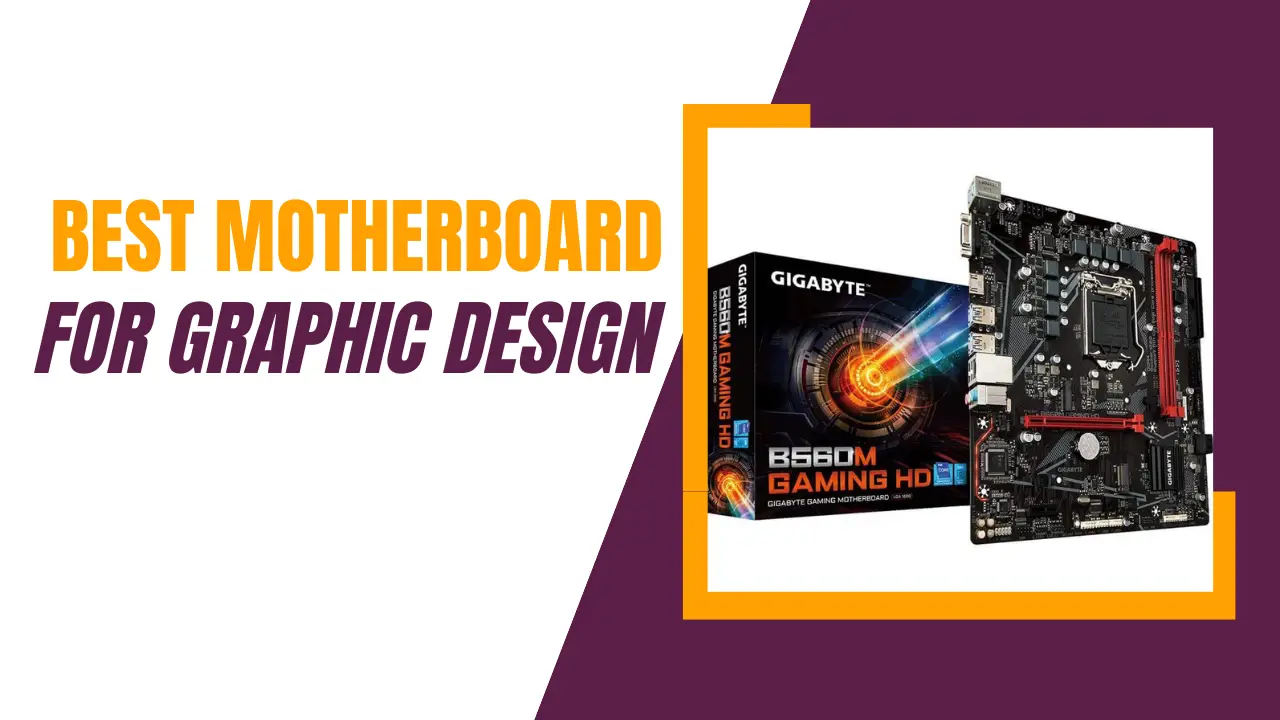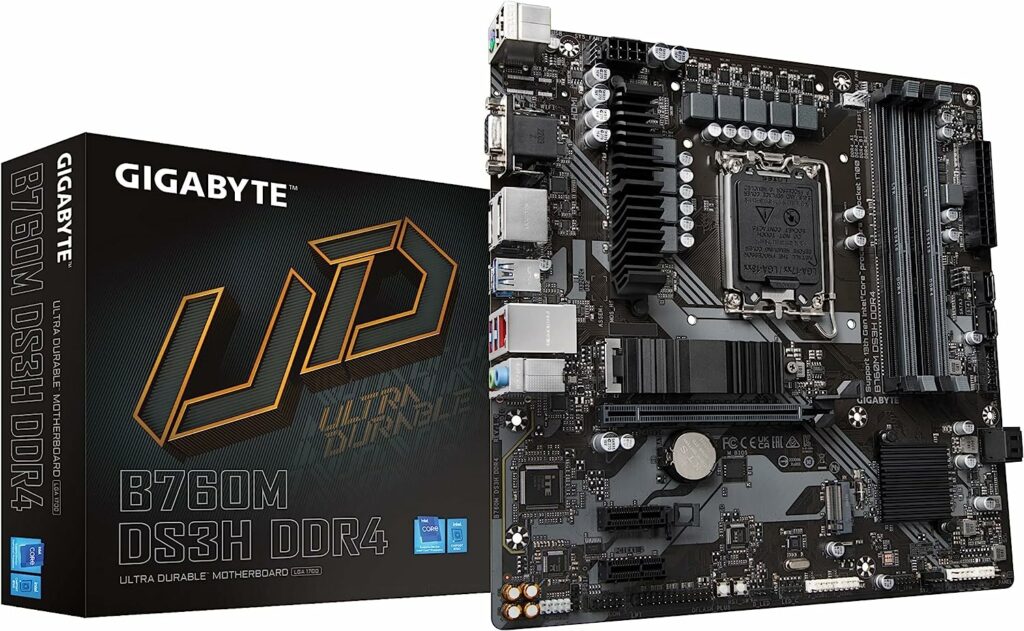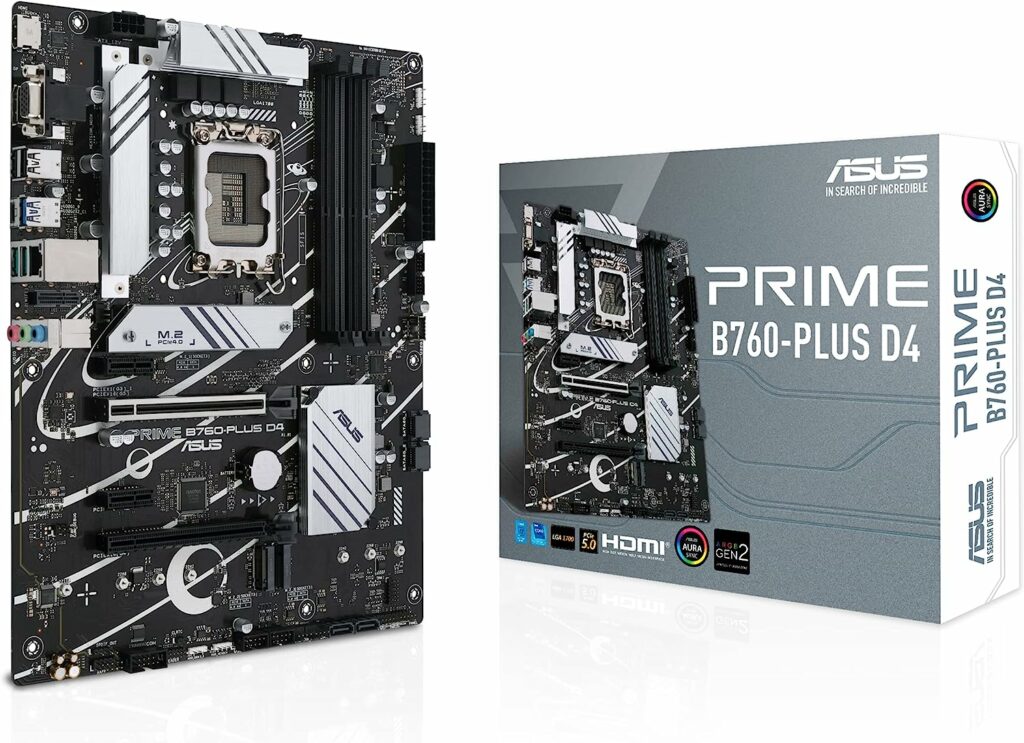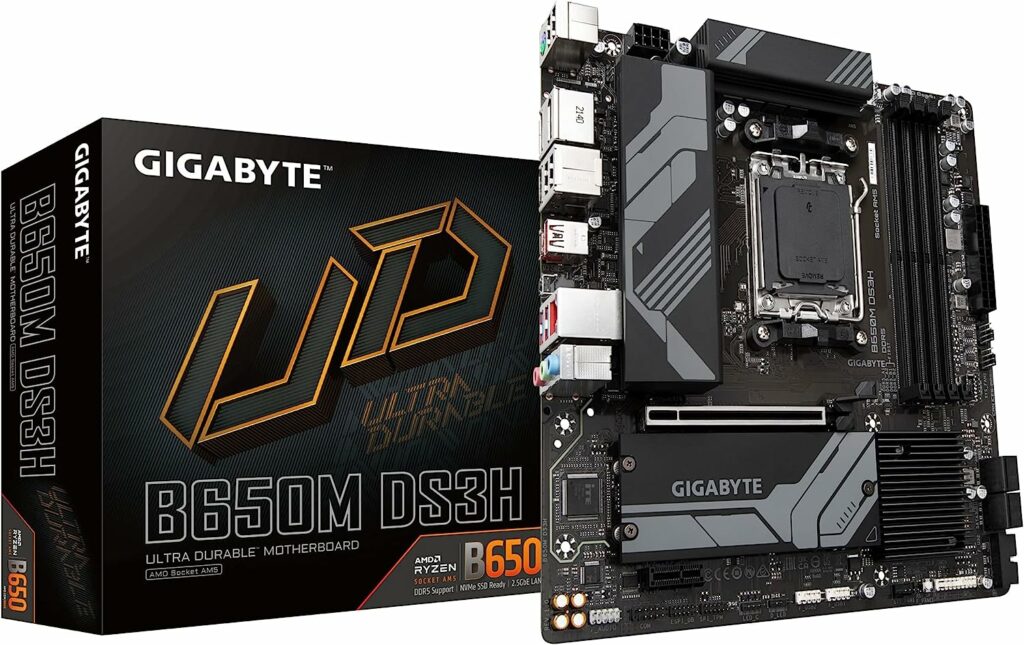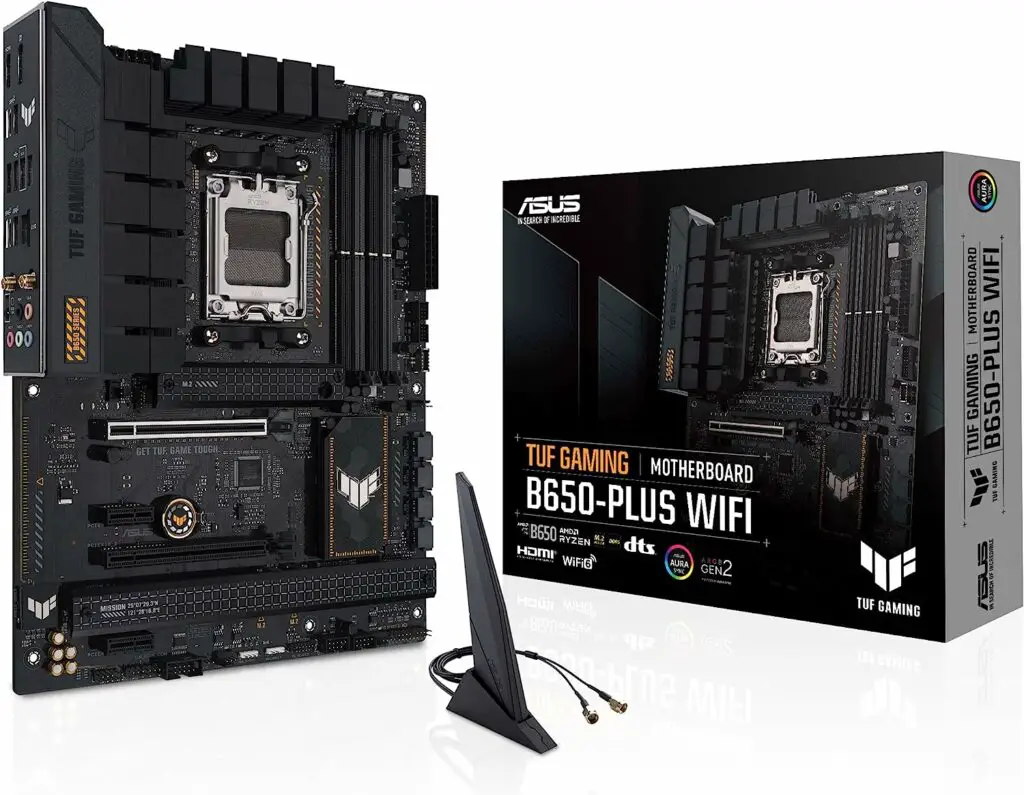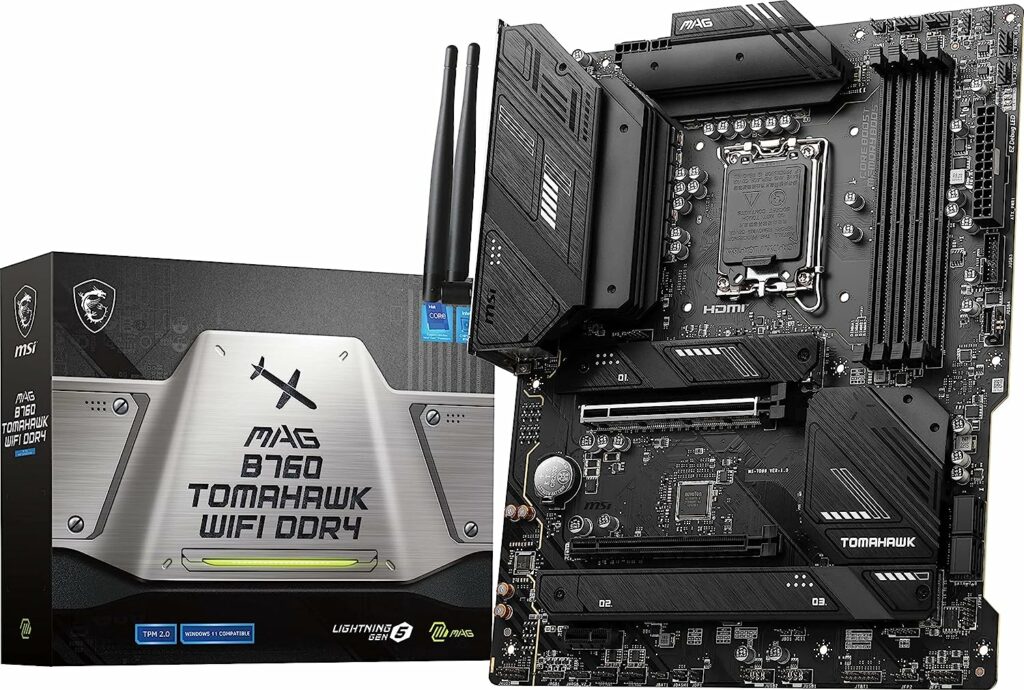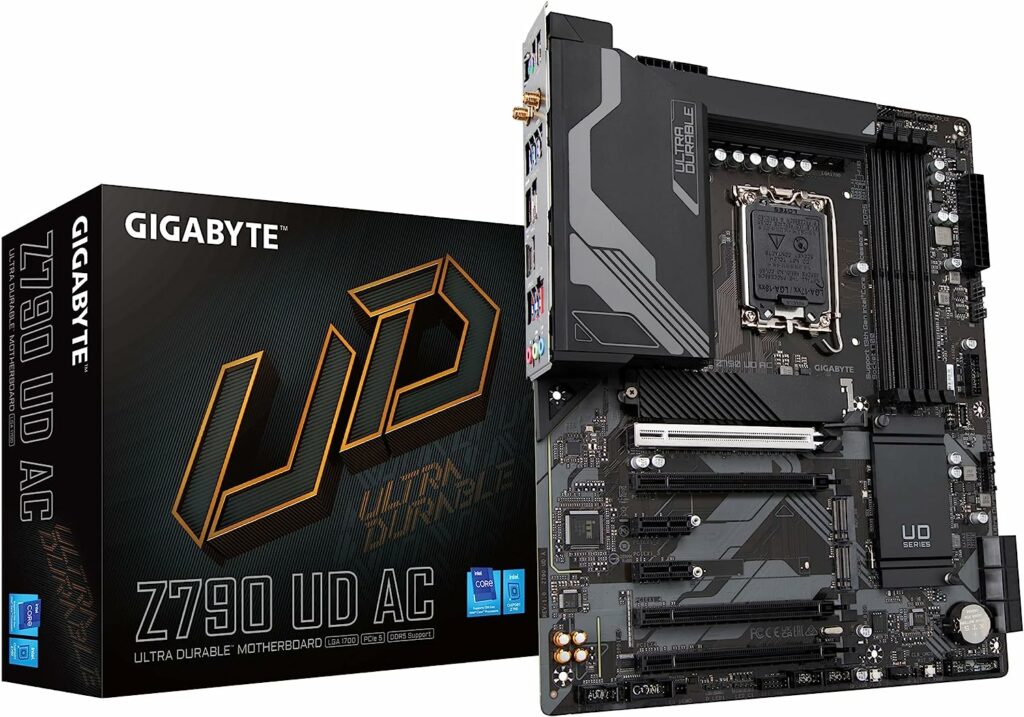What is a good motherboard for graphic design?
When it comes to graphics design, having a powerful and reliable motherboard is essential. A good motherboard can help you achieve better performance, faster data transfer rates, and more stable system operation.
Graphics design is a demanding task that requires a powerful PC with a high-performance motherboard. A good motherboard for graphics design should have a compatible CPU socket, enough RAM slots, multiple PCIe slots, fast storage options, and reliable cooling features. It should also support the latest connectivity standards, such as USB 3.2 Gen 2×2, Thunderbolt 4, Wi-Fi 6, and 2.5Gb LAN.
Graphic designers use various software tools and hardware devices to create their designs, such as Photoshop, Illustrator, InDesign, and more. One of the most important hardware components for graphic design is the motherboard, which is the main circuit board that connects all the other parts of the computer. The motherboard determines the performance, compatibility, and features of the computer, and thus affects the quality and efficiency of graphic design work.
In this article, I will review some of the best motherboards for graphics design that are available in the market in 2023. I will also mention their pros and cons, and suggest some other activities that you can do with these products.
Our recommended list of the Best Motherboard For Graphic Design
- GIGABYTE B760M DS3H DDR4
- ASUS Prime B760-PLUS D4
- GIGABYTE B650M DS3H
- ASUS TUF Gaming B650-PLUS WiFi
- MSI MAG B760 Tomahawk WiFi
- GIGABYTE Z790 UD AC
System Requirements For Graphic Design
Graphic design is a creative field that involves creating visual content for various purposes, such as logos, illustrations, posters, flyers, websites, and more. Graphic design requires a computer that can handle high-performance tasks and deliver stunning visuals. The system requirements for graphic design can vary depending on the type of software you use, the complexity of your projects, and your personal preferences. However, here are some general guidelines for the minimum, maximum, and recommended system requirements for graphic design:
Minimum System Requirements for Graphic Design
- Operating System: Windows 7 (64 bit), Windows 8.1 (64 bit), Windows 10 (64 bit), MacOS 10.13 or later123
- CPU: Intel or AMD 64-bit processor; 1.5 GHz or faster12
- RAM: 2 GB or more123
- GPU: Not required, but optional for better performance12
- Disk Space: At least 1 GB of free space for installation and additional space for files12
- Monitor Resolution: At least 1024 x 768 pixels12
Maximum System Requirements for Graphic Design
- Operating System: Windows 10 (64 bit), MacOS 11 or later1
- CPU: Intel or AMD Quad-Core Processor; 3 GHz or faster1
- RAM: 16 GB or more1
- GPU: 2 GB of VRAM or more1
- Disk Space: At least 20 GB of free space for installation and additional space for files1
- Monitor Resolution: At least 1920 x 1080 pixels1
Recommended System Requirements for Graphic Design
- Operating System: Windows 10 (64 bit), MacOS 10.15 or later1
- CPU: Intel or AMD Quad-Core Processor; 2 GHz or faster1
- RAM: 8 GB or more123
- GPU: 1 GB of VRAM or more12
- Disk Space: At least 5 GB of free space for installation and additional space for files12
- Monitor Resolution: At least 1280 x 720 pixels12
These are some general system requirements for graphic design based on the most common software applications used by graphic designers. However, you should always check the specific requirements of the software you want to use before buying a computer. You should also consider your budget, portability, and file compatibility when choosing a computer for graphic design. You may want to overshoot your target and get a computer that exceeds the minimum requirements for optimal performance and future-proofing.
1. GIGABYTE B760M DS3H DDR4
This is a budget-friendly motherboard that supports Intel’s 13th and 12th Gen processors with the LGA 1700 socket. It has four DDR4 memory slots that can support up to 128GB of RAM at 3200MHz. It also has two M.2 slots for PCIe 4.0 NVMe SSDs, and six SATA ports for additional storage devices.
The motherboard has one PCIe 4.0 x16 slot for graphics cards, and two PCIe 3.0 x1 slots for expansion cards. It also has a USB 3.2 Gen 2 Type-C port on the rear panel, along with four USB 3.2 Gen 1 ports and two USB 2.0 ports. The motherboard also features a 2.5Gb LAN port for fast network connectivity, and a Q-Flash Plus button for easy BIOS updates.
The motherboard has a simple design with black PCB and gray heatsinks. It has a micro-ATX form factor, which means it can fit in most PC cases. The motherboard also has a PCIe EZ-Latch mechanism that makes it easy to install and remove graphics cards.
This motherboard is suitable for basic graphics design tasks, such as photo editing, vector graphics, and web design. It can also handle some casual gaming and streaming, as long as you pair it with a decent graphics card and CPU cooler. However, this motherboard is not ideal for heavy-duty graphics design workloads, such as Music Production, video editing, animation, or 3D modeling. It is also not suitable for overclocking enthusiasts or RGB lovers.
Pros
- Affordable price
- Supports Intel’s latest processors
- Has two M.2 slots for fast storage
- USB 3.2 Gen 2 Type-C port
- Q-Flash Plus button
- PCIe EZ-Latch mechanism
Cons
- No Wi-Fi or Bluetooth support
- Missing RGB lighting or headers
- No debug LEDs or POST codes
- No overclocking features
2. ASUS Prime B760-PLUS D4
Next up, we have a more expensive option. The ASUS Prime B760-PLUS D4, a mid-range motherboard that works with Intel’s 13th and 12th Gen processors. It has four slots for DDR5 memory, which is newer and faster than DDR4 and can hold up to 128GB of RAM at 5200MHz. It also has three slots for M.2 SSDs, which are super fast and can store your files and programs. And it has six ports for SATA drives, which are slower but cheaper and can store more stuff.
The motherboard has one slot for a graphics card, which is PCIe 5.0 and can run at full speed. It also has one slot for another card, like a sound card or network card, which is PCIe 4.0 and runs at slower speeds. And it has three slots for other cards, which are PCIe 4.0 and run at even slower speeds. It also has a USB Type-C port on the back, which is very handy and can transfer data really fast. The motherboard also has a DisplayPort output, a Thunderbolt 4 header, a front USB Type-C header, a Wi-Fi 6 module, and a 2.5Gb LAN port.
The motherboard looks pretty sleek, with a black board and silver heatsinks. It’s an ATX board, which means it’s normal size and can fit in most cases. The motherboard also has an ASUS OptiMem II thingy, which makes the memory more stable and faster.
Pros
- Supports DDR5 memory
- Supports PCIe 5.0 devices
- Three M.2 slots for fast storage
- USB Type-C port
- Thunderbolt 4 header
- Wi-Fi 6 and Bluetooth
Cons
- No RGB lights or headers
- Expensive price
- No debug LEDs or POST codes
- No overclocking stuff
3. GIGABYTE B650M DS3H
The GIGABYTE B650M DS3H is a compact and effective micro ATX motherboard that’s perfect for tasks such as graphic design. This specific model has been crafted for compatibility with AMD’s AM5 and LGA 1718 CPUs, enabling users to leverage the power and efficiency of these processors.
One of the key features of the GIGABYTE B650M DS3H is its support for DDR5 memory. DDR5 memory is the latest generation of RAM and it delivers significantly higher speeds and performance compared to its predecessors. This leads to smoother, more responsive performance, particularly when handling graphics-intensive tasks such as rendering or VR, editing.
In terms of storage and expansion options, this motherboard is equipped with PCIe 4.0 M.2 slots. M.2 is a compact form factor for SSDs that connects directly to your motherboard. The PCIe 4.0 interface allows these SSDs to operate at extremely high speeds, making your system quick to boot and your applications fast to load. This means less waiting around and more productivity for your graphic design work.
For external connectivity, the GIGABYTE B650M DS3H is fitted with a USB 3.2 Gen2X2 Type-C port. This latest USB standard provides incredibly fast data transfer speeds, making it quick and easy to move large files such as high-resolution images or video footage between devices.
Network connectivity is taken care of by a 2.5GbE LAN port. This high-speed Ethernet connection ensures that you can take full advantage of high-speed internet connections, perfect for cloud-based applications, streaming high-definition content, or transferring large files over a network.
This motherboard comes with the reassurance of a 5-Year Warranty, providing peace of mind that your investment is protected.
The GIGABYTE B650M DS3H is a robust, high-performance motherboard that offers some of the latest technologies. It’s ideal for users seeking a reliable and cost-effective system, particularly for graphics-oriented tasks. Despite its affordability, it doesn’t compromise on quality or performance, making it a fantastic choice for both professional and amateur graphic designers.
Pros:
- Budget-friendly
- Supports AMD’s AM5 and LGA 1718 CPUs
- DDR5 memory support
- PCIe 4.0 M.2 and PCIe 4.0 support
- USB 3.2 Gen2X2 Type-C and 2.5GbE LAN
- 5-Year Warranty
Cons:
- Limited features
4. ASUS TUF Gaming B650-PLUS WiFi
As a graphic designer, I am constantly on the lookout for technology that can handle the intensive tasks associated with my profession. The ASUS TUF Gaming B650-PLUS WiFi motherboard, with its AM5 Socket Ryzen 7000 compatibility, is one such piece of tech that I can recommend.
The primary benefit of this motherboard for graphic design is its support for DDR5 memory. This latest generation of RAM provides improved data rates and bandwidth, which translates to faster rendering times, smoother operation of design software, and better handling of multitasking.
The 14 power stages ensure stable power delivery to all components. This feature is crucial when performing high-intensity tasks such as Programming and rendering, as it keeps the system stable and reduces the risk of crashes.
The motherboard also features PCIe 5.0 support, which, when coupled with an M.2 SSD, provides lightning-fast storage speeds.
One standout feature is the 2.5 Gb Ethernet and WiFi 6 support. The high-speed internet capabilities will be handy for those of us who collaborate online or rely on cloud storage.
Apart from graphic design, the ASUS TUF Gaming B650-PLUS WiFi motherboard is built for high-end gaming. It can easily handle resource-intensive games thanks to its advanced power management and high-speed memory support. Furthermore, the Aura Sync RGB lighting creates an immersive gaming environment. With the robust internet connections, it is also well-suited for online gaming, Deep Learning, and streaming.
The ASUS TUF Gaming B650-PLUS WiFi motherboard is a versatile and high-performance component that’s not just for gamers, but also proves to be an excellent tool for graphic designers. The investment, while potentially more expensive, pays off in speed, stability, and overall performance.
Pros:
- DDR5 and PCIe 5.0 Support
- WiFi 6 and 2.5 Gb Ethernet
- USB4 support
Cons:
- Expensive
5. MSI MAG B760 Tomahawk WiFi Gaming Motherboard
I’ve been working in graphic design for a long time and have used many different types of computer hardware. One piece of hardware I really recommend is the MSI MAG B760 Tomahawk WiFi Gaming Motherboard.
This motherboard can work with the latest Intel processors (12th and 13th Gen). These processors are really good and can handle tough design tasks.
It also works with DDR5 memory. This type of memory is faster than the older types and helps your computer run better when you’re doing things like opening big files or using multiple programs at once.
Another good thing about this motherboard is that it uses PCIe 5.0. This is a technology that lets your computer move data really fast, which is important when you’re working with big design files. This motherboard can also use M.2 drives, which are a kind of storage that’s very fast, so you don’t have to wait a long time for files to load.
This motherboard has a built-in 2.5Gbps LAN and Wi-Fi 6E, which means you can get on the internet really fast. This is important for graphic designers, who often need to use online tools and work with other people over the internet.
Lastly, this motherboard has USB 3.2 Gen2 ports. These let you move files really fast between different devices.
Pros:
- Excellent performance for graphics design
- Support for the latest hardware
- Wide range of features
- Durable build quality
- Affordable price
Cons:
- Limited overclocking headroom
This motherboard isn’t just good for graphic design; it’s also great for gaming. It’s fast and powerful, so you can play games without any problems. It also has good internet connections, which are important for online games or live streaming.
I think the MSI MAG B760 Tomahawk WiFi Gaming Motherboard is a great choice for graphic designers. It might be more expensive than some other options, but it has a lot of top-quality features that make it worth the price.
6. GIGABYTE Z790 UD AC
Last on our list is a top-tier option known as the GIGABYTE Z790 UD AC. This motherboard is designed to work with Intel’s 13th and 12th Gen processors. The motherboard offers four slots for a newer, quicker type of memory called DDR5, and it can handle up to 128GB of RAM at 6000MHz (OC).
There are three slots for something called M.2 SSDs, which are really fast and where you store your files and programs. It also has six ports for something called SATA drives – these are a bit slower but they’re cheaper and can store lots of stuff.
This motherboard has one slot for a graphics card. This slot is a type called PCIe 5.0, which means it can run at full speed. It also has another slot which is a bit slower (PCIe 4.0), where you can plug in things like a sound card or a network card. There are two more slots for other types of cards (PCIe 3.0) which are even slower.
At the back of the motherboard, you’ll find a USB Type-C port – a handy feature that allows data to be transferred really fast. There’s also an HDMI output, a built-in Wi-Fi component made by Intel, and a 2.5Gb LAN port for internet connections.
The motherboard itself looks quite sleek, with a black board and silver cooling components (called heatsinks). It’s a normal-sized (ATX) board, meaning it should fit into most computer cases. There’s also a feature on the motherboard called a PCIe EZ-Latch, which simply makes it easier to put in and take out graphics cards.
This motherboard is great for tasks that need a lot of computing power, like editing videos, creating animations, or working with 3D models. It can also handle high-end gaming and streaming, as long as you have a powerful graphics card and a good cooler for your CPU. But it’s not the best choice for people who like to overclock their computers, or for those who like the flashy RGB lights. Also, it’s a bit expensive – especially since DDR5 memory and PCIe 5.0 devices are still quite rare and costly.
Pros
- DDR5 memory
- PCIe 5.0 devices
- Three M.2 slots for super fast storage
- USB Type-C port
- Built-in Intel Wi-Fi and Bluetooth
Cons
- Quite pricey
Buying Tips When Looking For Best Motherboard For Graphic Design
Buying the best motherboard for graphic design is an important decision that can affect the performance and compatibility of your computer. A motherboard is the main circuit board that connects all the components of your PC, such as the CPU, RAM, GPU, storage drives, and more. It also determines which processors and memory types you can use, as well as the number and type of expansion slots and ports you have. Therefore, you should consider several factors when choosing a motherboard for graphic design, such as:
CPU Socket and Chipset: The CPU socket is the physical interface that connects the processor to the motherboard. The chipset is the set of integrated circuits that controls the communication between the CPU and other components. You should choose a motherboard that has a compatible socket and chipset with the CPU you want to use. For example, if you want to use an Intel 12th Gen processor, you need a motherboard with an LGA 1700 socket and a Z690 or B660 chipset. If you want to use an AMD Ryzen 5000 processor, you need a motherboard with an AM4 socket and an X570 or B550 chipset.
Form Factor: The form factor is the size and shape of the motherboard. It determines how much space you have for installing components and cooling solutions, as well as the size of the case you need. The most common form factors are ATX, Micro ATX, and Mini ITX. ATX is the largest and offers the most expansion slots and ports, but also requires a larger case. Micro ATX is smaller and has fewer slots and ports, but can fit in most mid-sized cases. Mini ITX is the smallest and has the least slots and ports, but can fit in compact cases or even some laptops.
Memory Slots and Type: The memory slots are the connectors that hold the RAM modules on the motherboard. The memory type is the standard of RAM that is compatible with the motherboard. You should choose a motherboard that has enough memory slots for your needs and supports the memory type you want to use. For example, if you want to use DDR5 RAM, which is faster and more power-efficient than DDR4 RAM, you need a motherboard that supports DDR5 memory. You should also check the maximum memory capacity and speed that the motherboard can handle.
Expansion Slots and Ports: The expansion slots are the connectors that allow you to install additional components on the motherboard, such as graphics cards, sound cards, network cards, and more. The ports are the connectors that allow you to connect external devices to your PC, such as monitors, keyboards, mice, speakers, USB drives, and more. You should choose a motherboard that has enough expansion slots and ports for your needs and preferences. For example, if you want to use multiple graphics cards for better performance or multiple monitors for more workspace, you need a motherboard that has enough PCIe x16 slots. If you want to use fast storage devices or wireless connectivity options, you need a motherboard that has enough M.2 slots or Wi-Fi 6E support.
Features and Quality: The features and quality of a motherboard can vary depending on the brand, model, price range, and target audience of the product. Some features that can enhance your graphic design experience are RGB lighting, audio quality, overclocking support, BIOS interface, cooling system, durability, warranty, and customer service. You should choose a motherboard that has the features and quality that suit your needs and budget.
These are some of the main factors to consider when buying the best motherboard for graphic design. However, you should also do your own research and compare different products before making a final decision. You can read online reviews, watch videos, or ask for recommendations from other graphic designers or experts.
Conclusion
In conclusion, the right motherboard is a critical component that contributes significantly to the overall performance and efficiency of a graphic design workstation. The ideal motherboard for graphic design will offer robust support for high-end processors, ample high-speed memory, and quick data transfer capabilities. It will also offer plenty of expansion slots for additional components like powerful graphics cards, fast and versatile storage options, and efficient connectivity solutions, all tailored to meet the rigorous demands of graphic design applications.
Moreover, it’s crucial to consider the quality and reliability of the motherboard, ensuring it can withstand intense workloads and extended use. The form factor should align with your build’s requirements, and the motherboard should offer an adequate number of ports and connectors for all your peripherals.
Price is another essential aspect. While high-end motherboards come with numerous advanced features, they may not always be necessary for every graphic designer. It’s vital to assess your specific needs and budget, then strike a balance between the two to find a motherboard that offers the best value.
Remember, your needs as a graphic designer may evolve over time. So, even if you don’t need the most advanced motherboard right now, investing in a future-proof motherboard can save you from potential upgrades down the line.
In essence, the best motherboard for graphic design is one that offers optimal performance, supports growth, is durable, and falls within your budget. It’s about finding a motherboard that caters to your specific needs as a graphic designer, making your creative process smoother and more efficient.
